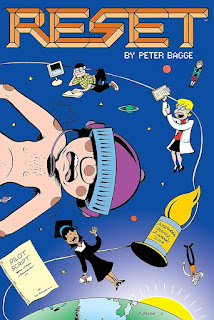The Problem of Susan and Other Stories by Neil Gaiman, P. Craig Russell, et. al.
I don’t know if Dark Horse is actually trying to adapt every last bit of short Neil Gaiman into comics form. He’s written a lot of stuff, and much of it wouldn’t adapt well. But it does feel like they’re trying, at least, with a long sequence of individual graphic novels and a few omnibuses stretching back more than a decade.
The grandly titled “Neil Gaiman Library” has mostly been stories that can turn into reasonable-length books. I’ve seen a bunch of them: A Study in Emerald ; Only the End of the World Again ; Chivalry ; Snow, Glass, Apples ; and Troll Bridge . But not all Gaiman stories can be fit into that length, no matter how hard Procrustes works.
So in 2019 we got The Problem of Susan and Other Stories , which includes adaptations of the title story, another short story, and two poems. Presumably, with this as a model, the rest of his oeuvre on ISFDB is now under development, and we can look forward to Nicholas Was… and Other Festive Poems Real Soon Now.
My joking aside, it’s actually good to see that someone realized that not every short story is suitable to be turned into a sixty- to eighty-page graphic novel. If you’re going to adapt things to other formats, it’s important to keep what works and is distinctive about the original.
All four pieces in Susan were adapted, scripted, and laid out by P. Craig Russell – as usual, Gaiman’s participation seems to consist entirely of signing contracts and allowing his name to be used – two of them for other artists and two of them drawn by Russell.
Now, I say “laid out,” but the last piece here is “The Day the Saucers Came,” a quick bit of doggerel that is presented on seven splash pages, one for each stanza, so I don’t know how much credit Russell should get for that one. It was a fun little poem, and it’s a fun little story here, with art by Paul Chadwick.
The other poem is “Locks,” which has Russell art. It’s a shorter piece (four pages) but broken into regular comics panels – and not as obviously verse, actually, reading like “normal” comics. It’s also slight: most of the Gaiman poems I’ve seen have been interesting ideas turned into solid verse rather than poetry, in the lets-explicate-the-deep-meaning-here sense. (My headcanon is that Gaiman intermittently writes poems to solidify ideas, and sometimes it turns into a fuller story and sometimes the poem is it.)
The other story is “October in the Chair,” in which the personified months of the year meet and tell stories. (A very very Gaimanesque idea, clearly.) Most of it is taken up by the story October, the host this time, tells – which is a somewhat creepy one, about a “runt” of a boy who runs away from home and what he decides to do then. The art here is from Scott Hampton, I think in full paintings as he often does, and it’s moody and deep to match the story.
And leading off is the title story, a riff on C.S. Lewis’s Narnia stories, in which an old academic – who we suspect, by the end, is Susan, or maybe the real-world version of her – talks to a young reporter about her life and work studying folklore and fantasy. Susan was the Pevensie who didn’t die in a train crash in The Last Battle, who didn’t get to return to Narnia at death, because she had already grown up too much and was no longer innocent. That is the problem, as both the old academic and the young journalist agree. Gaiman also has a somewhat darker view of the Lion and the Witch here, which will be unsurprising to those who have read his fairy-tale retellings like “Snow, Glass, Apples.”
So all four of the stories are interesting and done well, and they vary substantially in tone – the poems are much lighter than the stories, and “Susan” is perhaps even darker than “October,” if you accept its cosmology. There isn’t really a thread that ties all four pieces together, other than being by Gaiman – but that, I suppose, is the deal of the whole series.
Reposted from The Antick Musings of G.B.H. Hornswoggler, Gent.




















